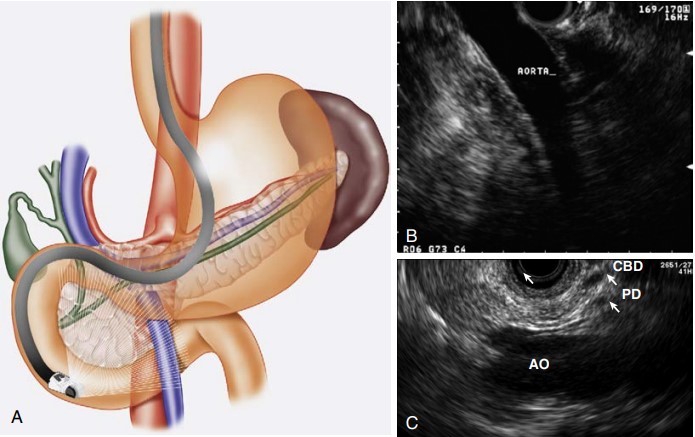
Revolutionizing Gastrointestinal Diagnostics: Endoscopic Ultrasonography in the Pancreas, Bile Duct, and Liver
The Impact of Endoscopic Ultrasonography on Gastrointestinal Diagnostics
Endoscopic Ultrasonography (EUS) stands at the forefront of diagnosing and managing diseases related to the pancreas, bile duct, and liver. This minimally invasive technique offers a detailed, up-close view of these internal structures, providing invaluable information beyond the reach of traditional imaging methods.
Unveiling Pancreatic Conditions
EUS is particularly significant in evaluating pancreatic diseases. Whether it’s identifying benign cysts or assessing pancreatic tumors, EUS’s high-resolution images enable detailed examination, aiding in:
- Diagnosis of Pancreatic Cancers: Early detection is critical, and EUS is often the best tool for identifying small tumors.
- Evaluation of Pancreatic Cysts: Determining the nature of cysts, whether they’re benign or have malignant potential.

Investigating Biliary Tract Disorders
When it comes to biliary tract diseases, including gallstones and bile duct cancers, EUS plays a crucial role:
- Detecting Cholelithiasis: EUS can identify gallstones, especially small ones that might be missed by other imaging techniques.
- Evaluating Bile Duct Abnormalities: Assessing strictures and masses in the bile duct, crucial for appropriate intervention.


Examining Liver Abnormalities
The liver, a vital organ, can also be thoroughly examined using EUS. This includes:
- Identifying Liver Lesions: Pinpointing the nature of liver lesions, whether benign or malignant.
- Assessing Liver Cirrhosis and Portal Hypertension: EUS can help in staging liver cirrhosis and evaluating complications like varices.
EUS-Guided Fine-Needle Aspiration
A key feature of EUS is its ability to perform fine-needle aspiration (FNA). This technique allows for tissue sampling of lesions in the pancreas, bile duct, and liver, providing vital information for accurate diagnosis and treatment planning.
Conclusion
Endoscopic Ultrasonography has revolutionized the diagnostic landscape for gastrointestinal disorders, particularly in the pancreas, bile duct, and liver. Its precision and minimally invasive nature make it an invaluable tool in the early detection and management of various conditions, significantly improving patient care.
Disclaimer: This content is for informational purposes only and should not be considered as medical advice. Always consult a healthcare professional for personal medical advice.
Learn More About Our Gastroenterology Services
Contact Us for More Information
